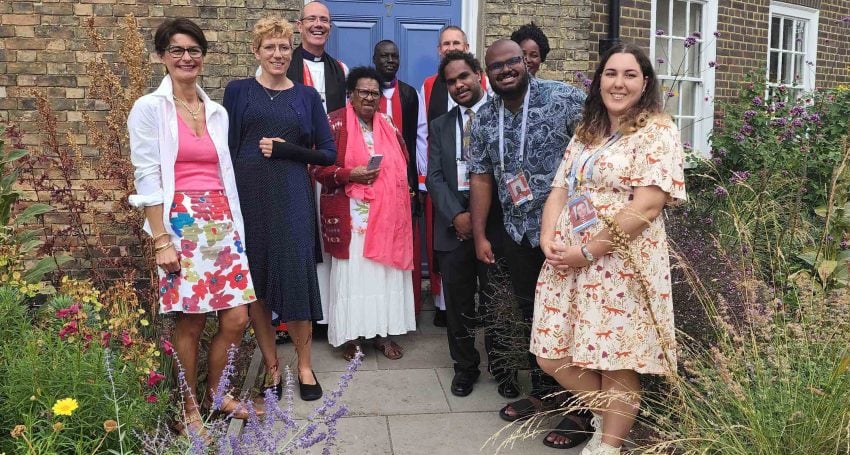Knowing me, Knowing You: understanding the “A-word" (and it’s not “Abba”)
Features
“The challenging point is that knowing oneself as an Anglican does not come automatically, depending on your definition of ‘knowing’. For many of us, we have a feeling of what being an Anglican is. Ask a group of Anglicans ‘What is Anglican?’ after church one morning and you’ll receive a varied collection of answers,” says Jonathan Sargeant from St Francis College

St Augustine of Hippo is reputed to have said, “Believe in order to understand and understand in order to believe.” A key idea for Anglicans is this – understanding our faith better helps us to live flourishing lives as Christians, participate in God’s mission and serve Christ. In other words, understanding who we are, what we believe and how we live out that belief is a crucial part of being a comprehensive Anglican in the 21st century.
The challenging point is that knowing oneself as an Anglican does not come automatically, depending on your definition of “knowing”. For many of us, we have a feeling of what being an Anglican is. Ask a group of Anglicans “What is Anglican?” after church one morning and you’ll receive a varied collection of answers, drawing on the meaning of the word itself, some historical stuff about Henry VIII, the presence of priests and bishops and much more.
In practice this means that when we experience and participate in worship, for example, we know what Anglican worship is. If we wondered into a different church, we might even get a feeling rather quickly that tells us we are experiencing something from another tradition!
The well-known Latin saying Lex orandi, lex credendi, goes some way to explaining this. One translation of this maxim is that “the law of what is prayed [is] the law of what is believed”. Therefore, the phrase is often interpreted as meaning that you can tell what someone believes by observing how they worship. The phrase sometimes has the addition, lex vivendi, to make the translation “the law of what is prayed [is] what is believed [is] the law of what is lived“. Therefore, one might be able to determine what people believe by looking at how they worship, and this will be expressed by how they live.
Advertisement
So some examination and exploration might help people who have a feeling of what Anglicanism is get to grips with the actual foundational ideas. The next question would be to determine what shape this exploration would take. What should the boundaries be? The fact that very varied answers arise in our answers to the post-worship question back in the second paragraph suggests those boundaries might be wide as well. Examining worship, its styles, words, and form in our Prayer Book would be crucial as our Latin exercise above suggests.
There’s history too. A little digging points to a distinctive church in England many centuries before Henry VIII was born. The traditions of Celtic Christianity, churches named after St Alban, the first recorded British Christian Martyr in the 3rd or 4th century and even the presence of St Augustine of Canterbury in the 6th century all point to a distinctive church in England long before Henry had his marital difficulties. So, sure, history would be important.
Advertisement
We’d need to look at how we organise ourselves, both geographically with dioceses, parishes and provinces, and also amongst our people, with bishops, priests and deacons and the laity rounding things off there. Add to this the nature of our legal system, with canon laws determined by our Synod and you’d start to get a distinctive sense of Anglicanism.
Underpinning all of this is our faith itself, grounded in the love of God whom we know through Jesus Christ and see in our Scriptures. That should be the place to begin! Of note is the very Anglican way we balance our starting point in Scripture with what we have come to know through our Church tradition and a lens provided by common sense and reason. Sometimes the metaphor of a three-legged stool is used with a leg each for Scripture, tradition and reason. The delicate, composed dance of those three ideas is what we sometimes call the Via Media, the Middle Way, as each informs and regulates the others.
The shape of our aims in mission are also key Anglican indicators. The “Marks of Mission”, as we call them are a particularly Anglican list of just what the Church is trying to do in our local communities, and nationally and internationally as well. Even our art and architecture are worth exploring, giving us clues about a faith that values investigations into the imagination as ways of being God’s people to ourselves, others and the world.
In the end, the stories of Anglicans like you and me would be crucial to rounding out our explorations of what it is to be Anglican. The lived experience of those who have come to appreciate serving in our Anglican schools, early learning centres, ministries and caring agencies, such as Anglicare, would inform this.
It should come as no surprise that the realms of Anglican things listed here are the foundational pieces of the Anglican Identity short course, created by the FormEdFaith team at St Francis College. That program, comprising of eight short online videos, a workbook and other digital resources, is freely available to individuals and groups wanting to understand their faith a bit better.
There are various ways to get a sense of just what our faith is all about, and the Anglican Identity course might be a helpful place to start!
Editor’s note: The Anglican Identity short course will be officially launched at St Francis College on 16 February at 4.30pm in Lecture Room 1. For more information or for free tickets visit the Eventbrite page.






